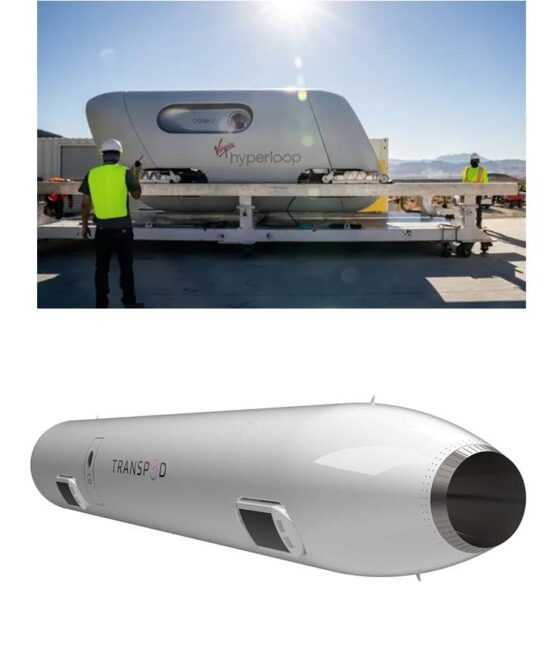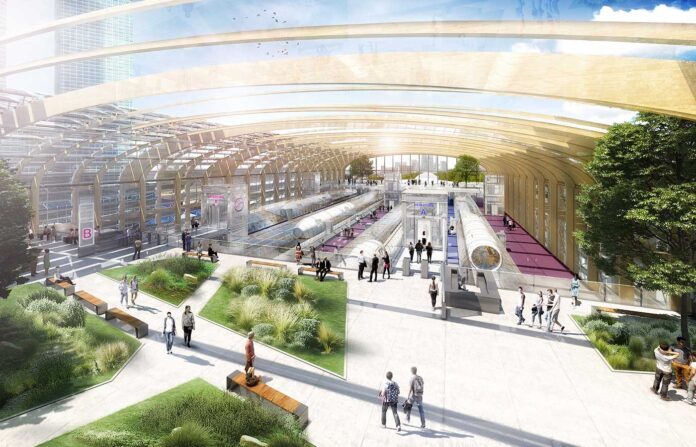When I was a lot younger and working at a summer job in a retail store, every time I made a sale I put the paperwork into a cylinder and put that into a tube that zipped it to the accounting department several floors above. The mechanism was simple. Once I placed the cylinder in the tube which contained air in a partial vacuum, I pressed a button and a fan along with the low air pressure pushed the cylinder to its destination. This technology dates back to the 19th century and was found operating between business addresses in cities with underground pneumatic tube systems in place to move everything from pharmaceuticals to mail to paperwork.
So when Elon Musk sketched his idea to scale up the pneumatic tube concept and turn it into an alternative to high-speed trains as a transportation system that would operate in a similar fashion to these old pneumatic tube systems, despite skepticism, the idea wasn’t so farfetched. Musk soon launched The Boring Company which has been working on it since and turning it into reality. And he isn’t alone. Another tech billionaire, Sir Richard Branson, of Virgin Galactic, and now Virgin Hyperloop, has worked on a competitive high-speed, ground-based transportation system that demonstrated a test passenger pod in 2020.
A new company with French-Italian and Canadian roots, founded in 2015, with offices in Toronto, and Limoges, France, has also entered the hyperloop market with plans to build a transportation line connecting the cities of Calgary and Edmonton, in Canada’s Province of Alberta. Called TransPod, the company recently closed on $688 million CDN in financing for this project, a hyperloop that will carry both passengers and freight between the two cities which lie 279 kilometres (174.7 miles) apart.
What today is a 3-hour road trip by automobile, or a 20-minute flight not counting travelling to the airport and from it, boarding and deplaning, will now be less than a 20-minute ride.
In a YouTube video, TransPod describes its technology as going beyond the “traditional hyperloop concept.” I love the notion the company thinks that the word traditional can be applied to a hyperloop. And if you compare the TransPod design with Virgin’s test vehicle, (see below) maybe the claim is justifiable.

TransPod is described as a plane without wings. Each pod will travel at speeds exceeding 1,000 kilometres (620 miles) per hour and will operate carbon-emission free. Pods on the line will depart every two minutes just like a subway commuter train. Passenger capacity in the current design configuration is 27 per pod with an extended version holding up to 50. Freight capacity is 10 metric tons. The passenger experience will involve arriving at the station, buying a ticket, and waiting at the appropriate boarding platform for the next TransPod to arrive. It’s that simple.
The propulsion system is powered by a linear induction motor. Air is diverted to flow from the front of each TransPod out the back using an axial compressor. The TransPod glides on a levitation system that minimizes friction. While inside the cabin, passengers travel in a temperature and pressure-regulated environment with comfortable seating and all the amenities you normally would find in business class on an aircraft. The interior lighting creates the feeling of daylight with a continuous side-window display showing passing scenery. And when you travel on a TransPod, after the first time, all personal comfort preferences get saved in the system for the next trip.
Work on the Edmonton to Calgary line is to begin in 2025. A high-speed test track is planned before the final construction of what is seen as the future of sustainable, low-emission ground transportation in the 21st century.
















